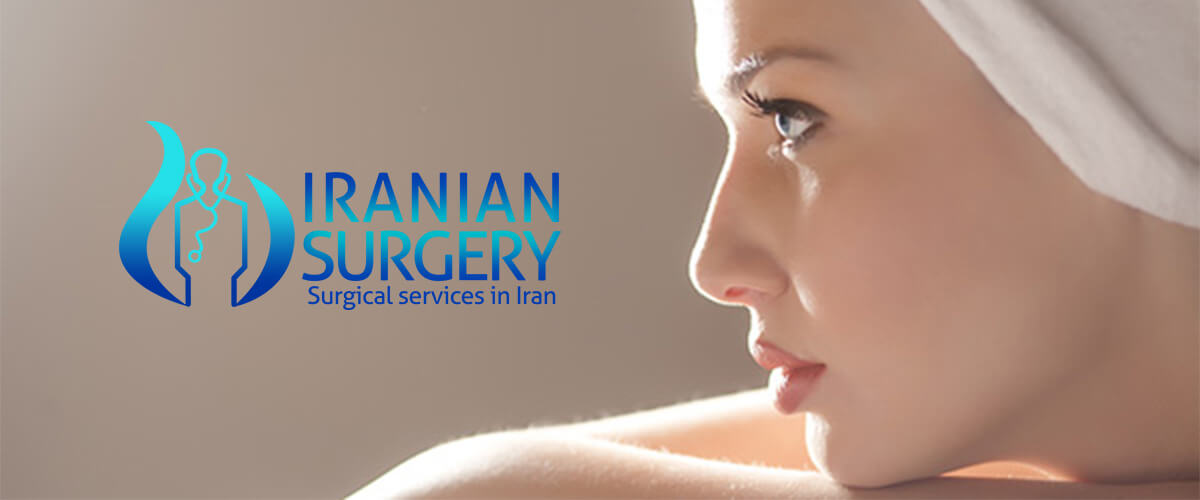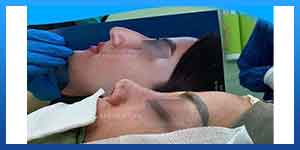During rhinoplasty

During the rhinoplasty surgery
What kind of anesthesia is used for rhinoplasty?
Can rhinoplasty be done under local anesthesia or general anesthesia?
Rhinoplasty does not have an ordered series of steps. Each surgery is unique and customized for the specific anatomy and goals of the person having the surgery.
Read more about : Rhinoplasty surgery before and after
Read more about : Rhinoplasty podcast with Dr Afshan shah
Step 1 – Anesthesia
Medications are administered for your comfort during the surgical procedure. The choices include intravenous sedation or general anesthesia. Your doctor will recommend the best choice for you.
Rhinoplasty requires local anesthesia with sedation or general anesthesia, depending on how complex your surgery is and what your surgeon prefers. Discuss with your doctor before surgery which type of anesthesia is most appropriate for you.
- Local anesthesia with sedation.This type of anesthesia is usually used in an outpatient setting. It's limited to a specific area of your body. Your doctor injects a pain-numbing medication into your nasal tissues and sedates you with medication injected through an intravenous (IV) line. This makes you groggy but not fully asleep.
- General anesthesia.You receive the drug (anesthetic) by inhaling it or through a small tube (IV line) placed in a vein in your hand, neck or chest. General anesthesia affects your entire body and causes you to be unconscious during surgery. General anesthesia requires a breathing tube
Read more about Rhinoplasty recovery time
Read more about Rhinoplasty in Iran
Read more about Bulbous nose surgery
Read more about Revision Rhinoplasty in iran
Step 2 – The incision
Rhinoplasty is performed either using a closed procedure, where incisions are hidden inside the nose, or an open procedure, where an incision is made across the columella, the narrow strip of tissue that separates the nostrils.
Through these incisions, the skin that covers the nasal bones and cartilages is gently raised, allowing access to reshape the structure of the nose.
Step 3 – Reshaping the nose structure
An overly large nose may be reduced by removing bone or cartilage. Sometimes surgery of the nose may require the addition of cartilage grafts.
Most commonly, cartilage from the septum, the partition in the middle of the nose, is used for this purpose. Occasionally cartilage from the ear or rarely a section of rib cartilage can be used.
Step 4 – Correcting a deviated septum
If the septum is deviated, it can be straightened and the projections inside the nose reduced to improve breathing.
If patients have had significant trauma to the nose in the past, the nasal bones are sometimes shifted into a more favorable position during surgery.
Step 5 – Closing the incision
Once the underlying structure of the nose is sculpted to the desired shape, incisions are closed. Additional incisions may be placed in the natural creases of the nostrils to alter their size.
After the surgery, you'll be in a recovery room, where the staff monitors your return to wakefulness. You might leave later that day or, if you have other health issues, you might stay overnight.
During closed rhinoplasty
The closed rhinoplasty surgery in Iran is usually performed under general anesthesia and in some cases under local anesthesia plus sedation. The intervention is made through various incisions made inside the nose. The number and extent of the incisions depend on the magnitude and location of the deformities to be treated.
Closed rhinoplasties are most often done when the surgeon is removing excess soft tissue, reshaping cartilage or bones, removing humps or bumps or doing some types of work on the nasal tip. The closed technique is the method surgeons have used for years.
Read more about Closed rhinoplasty vs open rhinoplasty
Read more about Best age for rhinoplasty
Read more about Rhinoplasty simulator
Read more about Laughing after rhinoplasty
About Iranian Surgery
Iranian surgery is an online medical tourism platform where you can find the best plastic Surgeons in Iran. The price of a Rhinoplasty in Iran can vary according to each individual’s case and will be determined based on photos and an in-person assessment with the doctor. So if you are looking for the cost of Rhinoplasty in Iran, you can contact us and get free consultation from Iranian surgery.
Read more about Cat eye surgery
Read more about Facelift surgery in Iran
Read more about Eyelid surgery in Iran
Read more about Cataract Surgery In Iran
Read more about Hair Transplant In Iran
Read more about Gynecomastia Surgery In Iran
Read more about Breast Augmentation Surgery In Iran
Read more about Dental Veneers In Iran
- Rhinoplasty in Iran
- Rhinoplasty in Iran cost
- Revision Rhinoplasty in Iran
- Closed Rhinoplasty in Iran
- Open Rhinoplasty in Iran
- Before Rhinoplasty in Iran
- During Rhinoplasty in Iran
- After Rhinoplasty in Iran
- The common methods used in rhinoplasty in Iran
- Flying after Rhinoplasty in Iran
- Risks of Rhinoplasty in Iran
- Steps of Rhinoplasty in Iran
- Cleaning outside of nose after Rhinoplasty in Iran
- Best age for Rhinoplasty surgery
- Rhinoplasty Recovery
- Features of a good Rhinoplasty surgery in Iran
- Infective complications related to Rhinoplasty surgery
- Plastic surgery in Iran
- Rhinoplasty
- Face lift
- Facial plastic surgery
- Lip augmentation
- Ear pinning
- Blepharoplasty
- Neck lift surgery
- Chin lift surgery
- Liposuction
- Abdominoplasty (tummy tuck)
- Body sculpting
- Arm Lift
- Brazilian Butt Lift
- Breast Augmentation
- Breast Lift
- Breast implant
- male breast reduction ( gynecomastia )
- sex reassignment surgery ( sex change )
- Vaginoplasty
- labiaplasty
- Hair transplant for male
- Female hair transplant
- Reconstructive surgery
- Septoplasty
- Breast reconstruction
- Breast reduction
- Cleft lip and palate repair



